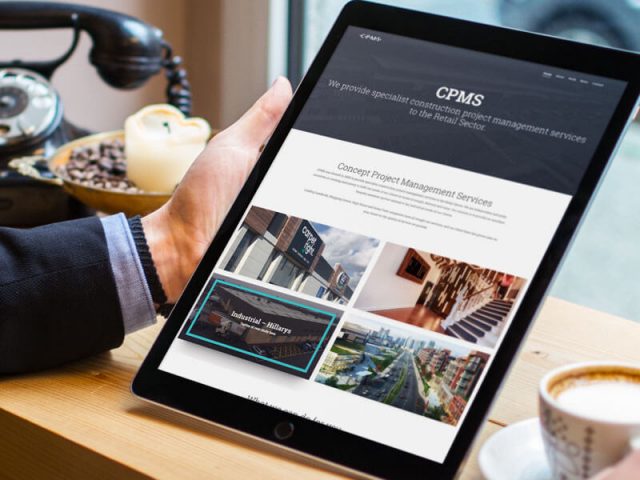
In today’s competitive digital landscape, content marketing is a powerful tool for engaging with potential customers. However, it’s essential to understand that not all buyers are in the same place in their decision-making process. To be effective, marketers must create content tailored to the different stages of the buyer’s journey—awareness, consideration, and decision. In this blog post, we’ll explore how to write content for each of these stages, ensuring that your audience receives the right message at the right time.
Understanding the Buyer’s Journey
Before diving into content creation, it’s important to understand the structure of the buyer’s journey. This journey consists of three primary stages:
- Awareness Stage: The buyer is experiencing a problem or pain point and is becoming aware of possible solutions.
- Consideration Stage: The buyer has identified potential solutions and is evaluating their options.
- Decision Stage: The buyer is ready to make a purchasing decision and is choosing between the various options available.
At each stage, the buyer’s mindset, needs, and intent vary, which is why content must be tailored accordingly. Let’s break down how to create content that aligns with each stage.
1. Awareness Stage: Educational and Informative Content
In the awareness stage, your audience may not even know they have a problem, or they may just be starting to identify the pain points. The goal here is to capture their attention by offering value through informative, educational content. At this stage, the buyer is looking for general information and potential solutions to their challenges.
Types of Content for the Awareness Stage:
- Blog Posts: Focus on broad topics that address common issues related to your industry. For example, if you sell eco-friendly products, a blog post titled “10 Ways to Reduce Your Environmental Footprint” can attract potential buyers who are just starting to explore sustainability.
- Social Media Content: Short-form posts, infographics, and videos work well for sparking interest on social platforms. These can offer quick tips, raise awareness about common problems, and introduce solutions in a light way.
- Ebooks and Guides: While these might be more detailed than blog posts, they still provide foundational knowledge. Offering an ebook titled “The Beginner’s Guide to Sustainable Living” can give readers a deeper understanding of the issue at hand, establishing you as an authority.
- Webinars and Videos: Offering webinars that tackle specific problems in your niche can attract people in the awareness stage. These video formats are perfect for engaging potential customers with live discussions or demonstrations.
Tips for Writing Content in the Awareness Stage:
- Use simple, straightforward language. The goal is to educate, not to sell.
- Focus on how-to content that helps readers understand their challenges.
- Include questions and headlines that reflect common search queries.
- Avoid heavy sales tactics; instead, position your brand as a helpful resource.
- Provide free resources like checklists or templates to add value and increase engagement.
2. Consideration Stage: Comparison and Evaluation Content
Once potential buyers move into the consideration stage, they have identified their problem and are actively researching solutions. They are no longer looking for general information—they want specific details about the available options. At this point, content should help them evaluate different solutions, comparing features, benefits, and costs.
Types of Content for the Consideration Stage:
- Case Studies: These are powerful tools for showcasing how your product or service has solved similar problems for other customers. A well-written case study can build credibility and provide real-world evidence that your offering works.
- Comparison Guides: Create content that compares your product to other solutions in the market. A post like “X vs. Y: Which Solution is Right for You?” can help buyers decide between multiple options.
- Product Demos: Offering an in-depth product demo or tutorial can help potential customers visualize how your product works and how it addresses their specific needs.
- Testimonials and Reviews: Social proof is crucial in the consideration stage. Highlighting testimonials, online reviews, or user-generated content helps reassure potential customers that they are making the right choice.
- Webinars and Educational Videos: These should be more focused on how your solution can address specific pain points. Instead of introducing the problem, now you should be diving deep into how your product or service can provide a solution.
- Additional Resources: To help potential customers further evaluate their options, you can refer them to external resources like https://www.skool.com/opinion-7077 that offers expert opinions and insights into the most effective solutions in the industry.
Tips for Writing Content in the Consideration Stage:
- Highlight specific product features and benefits.
- Use detailed language that speaks to the buyer’s pain points.
- Position your brand as a solution, not just a product.
- Provide answers to frequently asked questions or objections.
- Use clear calls to action, like “Download our product comparison chart” or “Request a demo today.”

3. Decision Stage: Persuasive and Actionable Content
At the decision stage, the buyer is ready to make a purchase. They’ve done their research, evaluated their options, and now they just need a final push. Content at this stage should be highly persuasive and focused on helping the buyer feel confident in their choice.
Types of Content for the Decision Stage:
- Product Pages: These should be optimized with clear, compelling descriptions, strong value propositions, and a straightforward buying process. A detailed product page that highlights all the features, customer reviews, and easy-to-understand pricing can seal the deal.
- Free Trials or Samples: Offering a free trial or sample is a great way to let potential customers experience your product firsthand. At this stage, buyers are looking for assurances that your solution will deliver on its promises.
- Discounts and Special Offers: If appropriate, offering a discount or limited-time offer can create a sense of urgency and encourage action. For instance, “Get 10% off your first order” or “Limited-time offer: Free shipping for new customers” can make a big difference in the decision-making process.
- Personalized Emails: Sending personalized emails with special offers or product recommendations based on the buyer’s behavior can encourage them to take the final step. For example, “We noticed you’re interested in [Product X]—here’s a special 15% discount for you.”
- Sales Pages and Landing Pages: These should be focused on closing the sale, with clear, concise messaging that highlights why your product is the best option for the buyer. Use strong calls to action, like “Buy Now,” “Start Your Free Trial,” or “Schedule a Call.”
Tips for Writing Content in the Decision Stage:
- Use persuasive language that focuses on the benefits of your product.
- Create a sense of urgency (e.g., limited-time offers).
- Make the purchasing process as easy and frictionless as possible.
- Address any remaining objections, such as price or product compatibility.
- Offer a clear call to action that guides the customer toward making a purchase.
Conclusion
Writing content for the different stages of the buyer’s journey requires a strategic approach that meets your audience where they are. In the awareness stage, you’re educating them about their problems and potential solutions. In the consideration stage, you help them evaluate their options. Finally, in the decision stage, you persuade them to choose your solution and make the purchase.
By tailoring your content to the needs of your audience at each stage, you not only increase the likelihood of conversions but also build trust and credibility that can lead to long-term customer relationships. Whether you’re writing blog posts, creating videos, or crafting product pages, always keep the buyer’s journey in mind to provide content that resonates and drives action.
